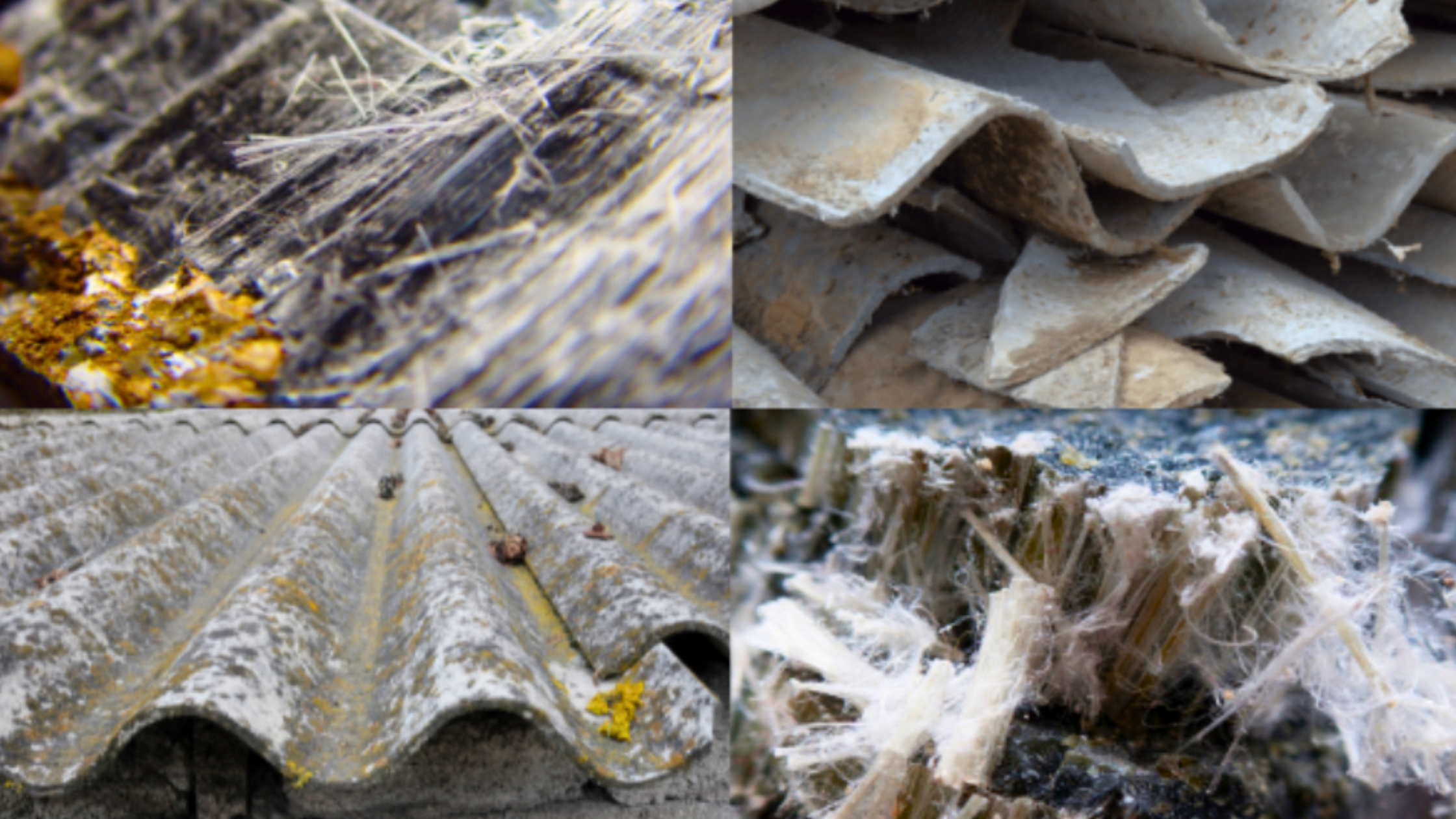What Are Asbestos and Lead, and Why Should We Care?
By Erika Pietrzak, November 16, 2025
Asbestos and lead are dangerous, long-lasting pollutants that threaten our health and environment, even as political battles continue to put their protections at risk. Recent gains, like the asbestos ban and stronger lead standards, now face renewed uncertainty, making it urgent to defend these lifesaving safeguards.
Asbestos and lead have both been high-profile news and scientific issues over the last five years. Republicans and Democrats are divided on many climate issues, but both sides of the aisle largely agree with the fact that these two pollutants are harmful to human health and the environment. Under the Biden administration, stricter allowances for and more urgent reactions to asbestos and lead were put in place. During those four years, the U.S. government finalized a rule banning the ongoing use of asbestos and initiated a 10-year plan to replace lead pipes. Under the Trump administration, asbestos and lead regulations are potentially being reversed once again. Many know that these pollutants are harmful, but what do they really do, and how important are they to regulate, or ban entirely?
In 2024, chrysotile asbestos was banned by the Environmental Protection Agency (EPA). This ban included a timeline for phasing out the pollutant from industry and concluded that products already produced and in use, known as “legacy uses,” pose “unreasonable risk.” In fact, even the largely anti-climate-policy Trump administration is maintaining this standard, despite early attempts to reverse it. In July of 2025, following a legal challenge, the EPA under the Trump administration withdrew a plan to rewrite the 2024 chrysotile ban, leaving the ban in place for now.
In 2021, the Centers for Disease Control and Prevention (CDC) updated its recommended blood lead reference value (BLRV) to 3.5 µg/dL, up from the previous 5.0 μg/dL. Upon recommendation of the Biden-Harris administration, the EPA finalized a rule that strengthened lead paint dust standards for floors, windowsills, and troughs. In January of 2025, the Lead and Copper Rule (LCR) was strengthened, mandating more complete lead service line replacements, establishing set levels to initiate mitigation efforts, and requiring testing in schools and childcare facilities.
Global health organizations are actively enforcing regulations to limit exposure to lead and asbestos. The United Nations Environment Program (UNEP) formed a voluntary partnership assisting and guiding countries working to phase out lead in paint, known as The Global Alliance to Eliminate Lead Paint. Similarly, the World Health Organization (WHO) provides guidelines for the clinical management of lead exposure. The International Organization for Standardization specifies methods for determining the concentration of asbestos fibers in ambient air using transmission electron microscopy. The International Labor Organization Asbestos Convention (C162) from 1986 establishes worker protection and phased bans for the pollutant.
Source: Clean Management Environmental Group
But what exactly are these pollutants? Asbestos is a mineral that is resistant to heat and corrosion. The carcinogenic and fibrous silicate minerals occur in six types of formations, all of which are made up of long, thin crystals. It was previously used extensively in insulation, cement, and floor tiles. Its use is now banned in more than 60 countries. During activities like mining and vehicle maintenance, widespread dispersal by wind and water leads to vast contamination.
Lead is a somewhat soft and chemically resistant metal that forms compounds with organic and inorganic substances alike. The small particles can float in air and water without easy detection. Lead can accumulate in the bodies of all animals, including humans. Motor vehicle exhaust used to be the largest source of lead emissions in the air, but has largely been removed from gasoline, while the pollutant remains persistent in many soils. Today, ore and metals processing, piston-engine aircraft operating on leaded aviation gasoline, waste incinerators, utilities, and lead-acid battery manufacturers are the largest sources of the contaminant.
And what do asbestos and lead do? The durable, microscopic fibers of asbestos are persistent and unable to biodegrade, allowing them to remain in air, water, and soil. The fibers cannot dissolve in water and are resistant to breaking down over time. Wind can carry these contaminants far from their source, causing serious problems in areas that do not produce these contaminants, including protected nature reserves, schools, wells, and homes. As winds become stronger and less predictable, the area of contamination will continue to increase. Asbestos in soil presents toxic stress to plants that can inhibit photosynthesis, nutrient uptake, and germination while adversely affecting “cell division and metabolism, risking plant growth, reproduction, and overall health, as well as making them more susceptible to disease and pests.”
Beyond harming the environment, asbestos is also related to several fatal diseases, including lung cancer and mesothelioma. Their microscopic fibers can get stuck in your lungs and remain for years, where they cause inflammation and scarring that leads to lung stiffening and potentially cancer. Since they are so small, many people do not know when they are contaminated until it is too late. One specific disease caused by asbestos is asbestosis, a chronic lung disease that appears years after exposure and causes shortness of breath, chest pain, crackling sounds when inhaling, and stiffening of the lungs. Doctors agree that all kinds of asbestos are dangerous to human health and no amount of asbestos is considered safe; thus, it must be avoided.
Similarly, lead is persistent, accumulates in soils and water, and is toxic to all living organisms. In soil, lead impairs germination, root and shoot growth, and overall biomass production. As soils dry out due to climate change, the contaminant will become more mobile, as do floods and wildfires. Lead can also increase the formation of ice crystals in clouds and cause clouds to form at warmer temperatures and with less water. While changing rainfall patterns and reducing snowpack, we do not know exactly how lead is changing our weather, but with time and more studies, these changes will become more obvious.
Source: Mill Creek Environmental
In addition to harming the environment, lead causes neurological damage, growth inhibition, reproductive problems, and even death. Lead is particularly dangerous because “the blood carries lead throughout the body and it is deposited in the bones where it accumulates.” Lead is particularly harmful for children who exhibit more hand-to-mouth behavior, where it causes developmental delays and behavioral issues. In adults, lead increases blood pressure, kidney and brain problems, infertility, and miscarriages. There is no safe level of lead at any age as even low levels can build up in your blood and cause long-term health complications.
It is obviously important that we fight to protect ourselves, our children, and our environment from asbestos and lead. The Trump administration has backed off from attacking asbestos policies for now, but that does not mean that they will not be attacked again and lead standards. We must protect our climate and our health from these deadly contaminants to keep our children safe and our environment healthy.
CLIMATE AND HEALTH SERIES
This piece is part of our ongoing #OurClimateOurHealth Series, which explores how the climate and environment shape our health outcomes. We highlight both the risks and the solutions, showing that climate action is also a public health imperative. Our goal is to inform, inspire, and equip readers, practitioners, and policymakers to safeguard health in the face of environmental change. Explore other stories from the series HERE.
Change The Chamber is a nonpartisan coalition of young adults, 100+ student groups across the country, environmental justice and frontline community groups, and other allied organizations. To support our work, donate or join our efforts!



